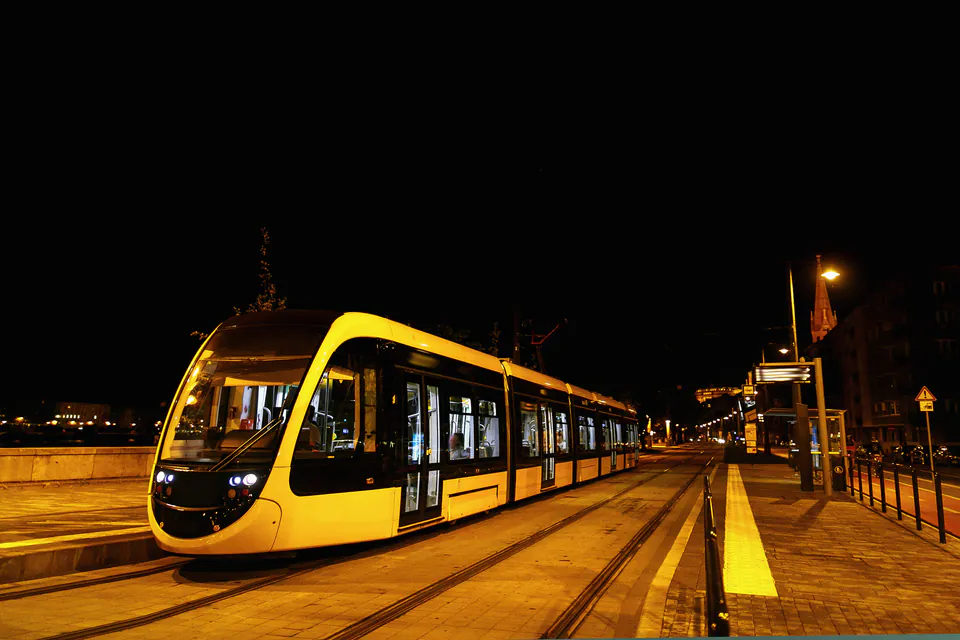Using Budapest's Tram System: A Practical Guide
You're sitting on a bright yellow tram, watching the Parliament building slide by your window while the Danube sparkles in the afternoon sun. This isn't just getting from point A to point B. It's one of the best ways to see Hungary's capital. These yellow trams have been running through Budapest since 1866, and now they make up one of the biggest and most charming tram networks in the world.
There are over 30 lines covering almost 174 kilometers of track. These cheerful yellow vehicles connect every part of the city, from Buda's cobblestone streets to Pest's wide boulevards. Whether you're going to a thermal bath, checking out historic neighborhoods, or just watching local life happen, getting good at using the tram system will make your Budapest trip so much better.

Why We Love Budapest's Trams
Budapest's tram network isn't just transport. It's how you really get to know the city. We've been riding these yellow beauties for years, and they've been faithfully serving people for over 150 years. They've turned into something really special that goes way beyond just moving people around.
The coverage is incredible. You can get to pretty much any place worth visiting. Major transport hubs, hidden neighborhoods, riverside walks, hilltop spots. The trams connect Buda and Pest so well that exploring both sides is super easy.
Some tram routes are basically amazing sightseeing tours. Tram 2 runs along the Pest side of the river and gets called one of the world's most beautiful tram routes all the time. When we ride it, we always get this constantly changing view of architectural gems. The neo-Gothic Parliament, the romantic Chain Bridge, the impressive Buda Castle, and the green slopes of Gellért Hill. Lines 19 and 41 give you equally stunning views from the Buda side, just different angles of the same breathtaking cityscape.
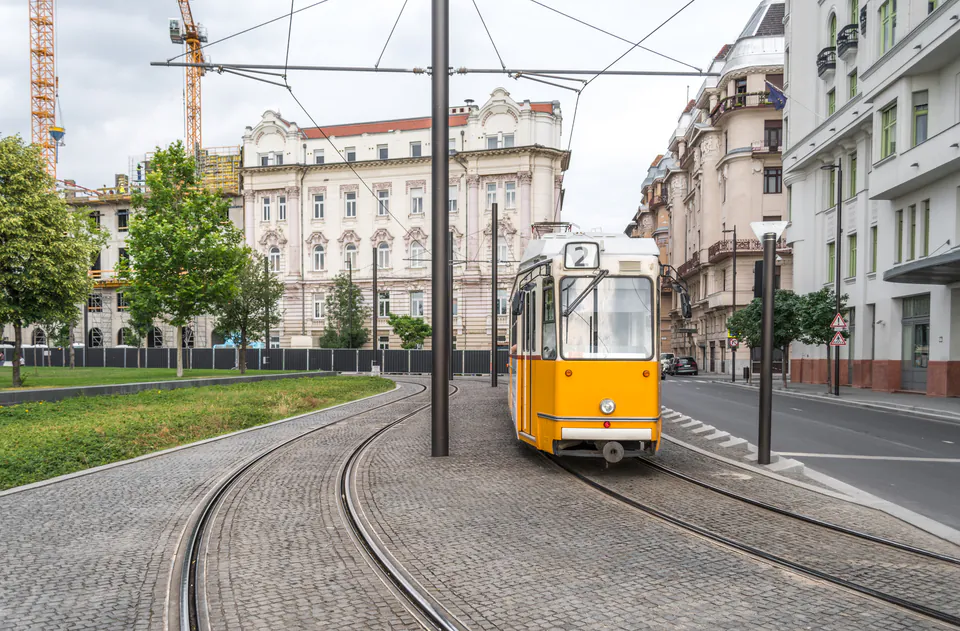
The price is what really gets us. Compared to taxis or even public transport in many other European capitals, Budapest's trams are incredibly cheap, especially with multi-day passes. You can explore the whole city for what a single coffee costs in some Western European cities.
Riding the trams gives you this authentic look into local life that you just can't get from tour buses or taxis. Lines 4 and 6 are among Europe's busiest tram routes and they buzz with the energy of daily Budapest life as they go around the Grand Boulevard. We share space with people going to work, students heading to university, and elderly residents visiting markets. You become part of the city's rhythm instead of just watching it.
The frequency on major lines means almost no waiting. During the day, popular routes run every 5-10 minutes. No need to plan your day around strict schedules. The trams work around your wandering spirit.
Getting the Hang of Tickets
Budapest has one ticketing system that covers trams, buses, trolleybuses, metro lines, and suburban railways inside the city. Understanding your options helps you pick the most economical approach for your stay while avoiding any nasty encounters with ticket inspectors.
Budapest Transport Tickets & Passes
| Ticket/Pass Type | Price (HUF) | Validity & Features |
|---|---|---|
| Single Ticket | 450 | One journey, 80 minutes (120 at night), must validate |
| Single Ticket (On Board) | 600 | From driver, exact cash needed, same validity |
| Block of 10 Tickets | 4,000 | 10 individual single tickets at discount |
| 24-hour Travelcard | 2,500 | Unlimited travel for 24 hours from start time |
| 72-hour Travelcard | 5,500 | Unlimited travel for 72 hours from start time |
| 15-day Budapest Pass | 5,950 | Unlimited travel for 15 days, excellent value |
| 24-hour Group Travelcard | 5,000 | Up to 5 people traveling together |
Picking Your Best Ticket
For really short visits with just a couple tram rides, single tickets work fine. But the 24-hour travelcard becomes worth it after just three trips, so it's the smart choice for most day visitors.
The 72-hour travelcard is great value for weekend trips or short breaks. You get unlimited freedom to hop on and off trams without counting costs. The 15-day pass costs only a bit more than the 72-hour option, making it an amazing deal for stays of four days or longer.
Families and small groups should definitely look at the 24-hour group travelcard. It covers up to five people for the price of two individual daily passes. Perfect for families exploring together or friends on a city break.
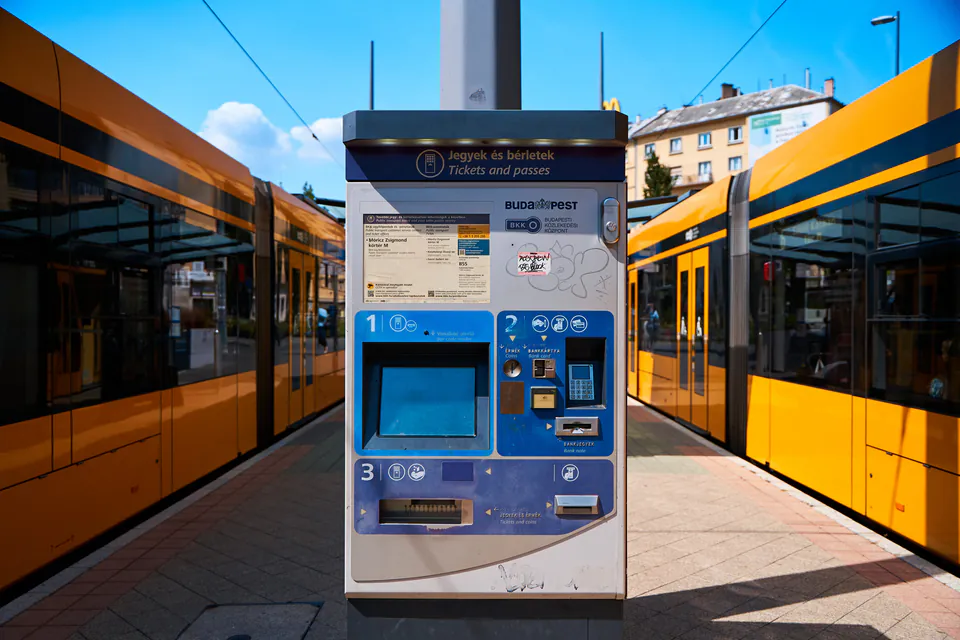
Where to Buy Your Tickets
Budapest's pre-purchase system means you need tickets before getting on, but getting them is pretty easy with lots of convenient options.
BKK Ticket Vending Machines are your best friends. These purple machines are everywhere - metro stations, major tram stops, and the airport. They work 24/7. They take both cash (Hungarian Forints) and bank cards, with touchscreen interfaces in English. The machines give change for cash payments and take contactless cards too.
BudapestGO Mobile App is the modern way to buy tickets. This official BKK app combines journey planning, real-time arrival info, and digital ticket buying all in one. After downloading and registering with a bank card, you can buy various tickets and passes instantly. The app needs internet for purchases and validation, so make sure you have reliable mobile data or WiFi.
BKK Customer Service Centres give you human help at major transport hubs like Deák Ferenc tér and Keleti railway station. Staff can answer questions, give you maps, and sell all ticket types. But opening hours vary and most aren't available 24/7, so check the BKK website for current schedules.
Buying tickets on board is possible but limited and more expensive. Some trams let you buy single tickets from drivers for 600 HUF (exact cash required), but this isn't available everywhere. It's always safer and cheaper to buy tickets ahead of time.
The Super Important Validation Rule
Buying a ticket is only half the job. Validation is absolutely crucial and often catches unprepared visitors. Budapest's honor system relies on passengers properly validating their tickets, and inspectors regularly check with big fines for violations.
Why Validation Matters
The validation system proves that your ticket is being used for a specific trip starting at a particular time. Without this timestamp, your ticket stays invalid no matter when you bought it. Think of validation as turning on your ticket for immediate use.
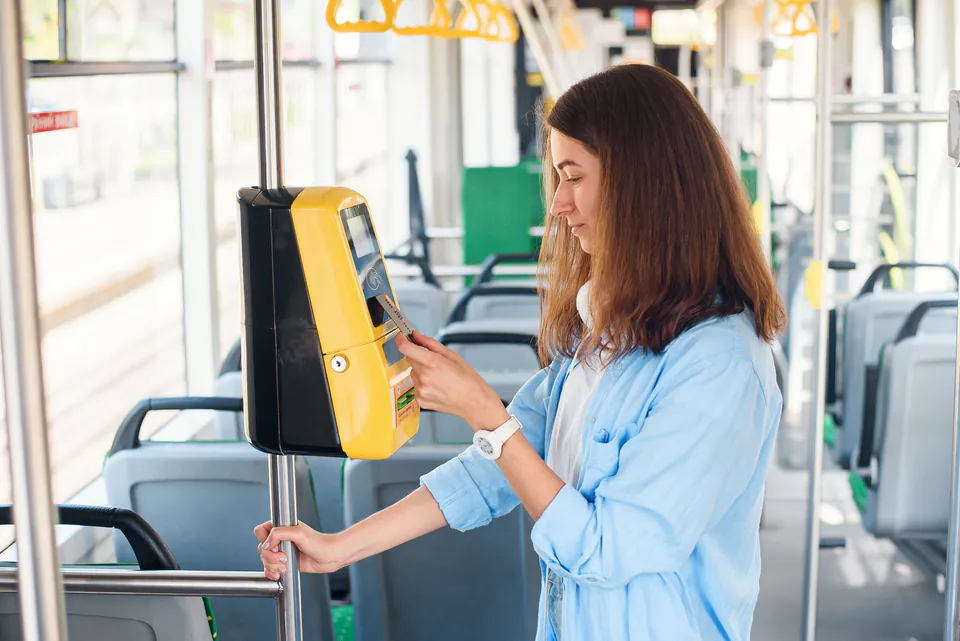
How to Validate Paper Tickets
On trams, buses, and trolleybuses, validate right after getting on using machines near the doors. The metro needs validation before you get to platform areas, at machines near escalators and entrances.
Red manual validators need you to do something. Put the ticket end with the number grid into the top slot, then pull the black frame firmly toward you. Listen for the punching sound and make sure the machine creates visible marks on your ticket. If the punch seems weak or unclear, try again. A faint mark might not satisfy inspectors.
Orange or yellow electronic validators work automatically. Put the numbered end of your ticket into the front slot and wait for the machine to stamp the date and time. Take your ticket when you see the light flash or hear the stamping sound.
How to Validate Digital Tickets
Using the BudapestGO app means scanning QR codes on validators or near vehicle doors before getting on. After successful scanning, the app shows an animated confirmation that proves validation. Time-based digital tickets must be re-validated each time you get on a new vehicle within the validity period.
What Happens If You Skip Validation
Traveling without a valid, validated ticket gets you immediate fines. Inspectors, often in regular clothes with purple armbands, regularly patrol all lines. On-the-spot fines cost 12,000 HUF when paid right away, going up to 25,000 HUF if paid later at BKK offices. These inspectors must give receipts and can sometimes take card payments for immediate settlement.
Getting Around Like You Live Here
Once you've got tickets and validation down, actually using the tram network becomes easy and fun. Understanding a few key things will have you moving around Budapest with confidence.
Reading the Network
Each tram shows its line number clearly on the front and sides, along with where it's going. Timetables and route maps at stops show the specific path and stations for each line serving that location. Electronic displays at many stops give real-time arrival info, though they're not at every stop across the network.
Planning Your Trips
The BudapestGO app is great for planning trips. It gives real-time routing with live vehicle locations and delay info. It even tells you which services use low-floor, accessible trams. Google Maps and Apple Maps also give reliable public transport directions for Budapest, typically showing tram routes in yellow to match the vehicles' color.
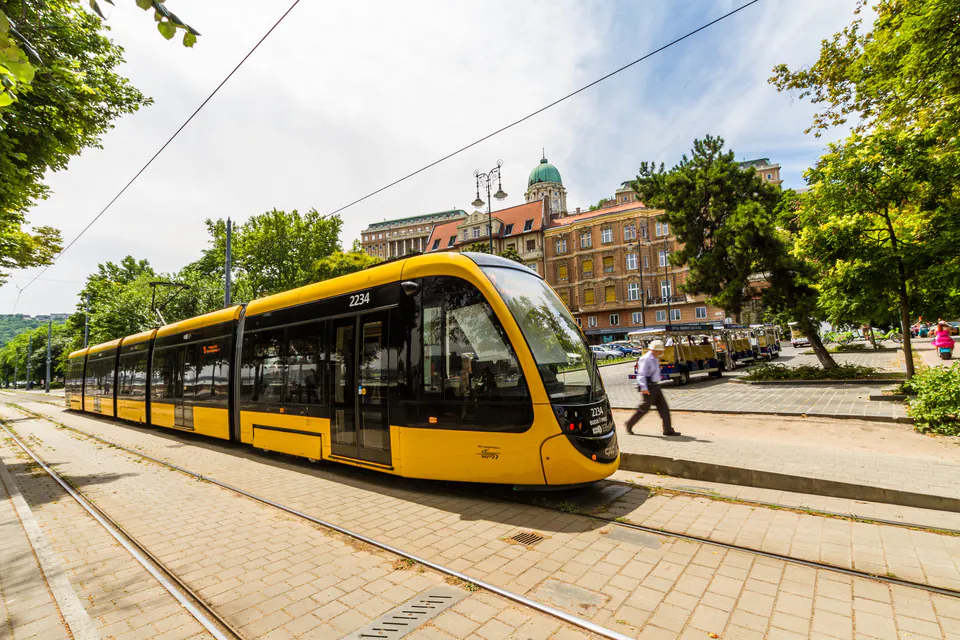
When Trams Run and How Often
Most tram lines run from about 4:30 AM until 11:00 PM to 12:30 AM, with major tourist routes running every 5-10 minutes during busy daytime hours. Evening and off-peak frequency typically goes down to 10-20 minutes, but popular lines keep reasonable service levels throughout operating hours.
Getting Around at Night
Tram 6 is the network's night champion, running 24 hours a day, seven days a week along the Grand Boulevard. This makes it incredibly valuable for late-night dining, entertainment, or early morning airport transfers. When other tram lines finish service around midnight, lots of night buses (numbered 900-999) take over, accepting the same tickets and passes.
Announcements and Info
Modern trams on central routes often announce upcoming stops in both Hungarian and English, with digital displays showing station names. But this isn't on all lines or older vehicles, so following your route on a map is still a good idea. The BudapestGO app's real-time tracking helps you watch your progress and get ready for your stop.
Riding with Good Manners
Following local etiquette makes sure everyone has pleasant trips while helping you blend into Budapest's daily rhythm.
Getting On and Off Smoothly
Always let passengers get off before trying to get on. Stand beside doors rather than right in front, creating clear paths for people leaving. Some trams need you to press door buttons to open them. Look for buttons near doors if they don't open automatically.
Signal that you want to get off by pressing stop request buttons well before your destination. These buttons, often labeled "STOP" or "Leszállásjelző," tell the driver to stop at the next station. Be careful of the gap between trams and platforms, especially at older stops where alignment might be less precise.
Being Considerate
Give seats to elderly passengers, pregnant women, people with disabilities, and those traveling with young children. This courtesy is really appreciated and reflects well on visitors. Don't put bags on empty seats when the tram gets crowded, and be mindful of personal space in busy conditions.
Take off backpacks in crowded trams and hold them low to create more space and prevent accidentally hitting other passengers. Stand clear of doorways to keep passenger flow going, stepping off briefly if necessary to let others exit.
Keep conversations, phone calls, and electronic device volumes low. Use headphones for music or videos. Food and drink consumption is generally not allowed onboard vehicles, so finish snacks before getting on.
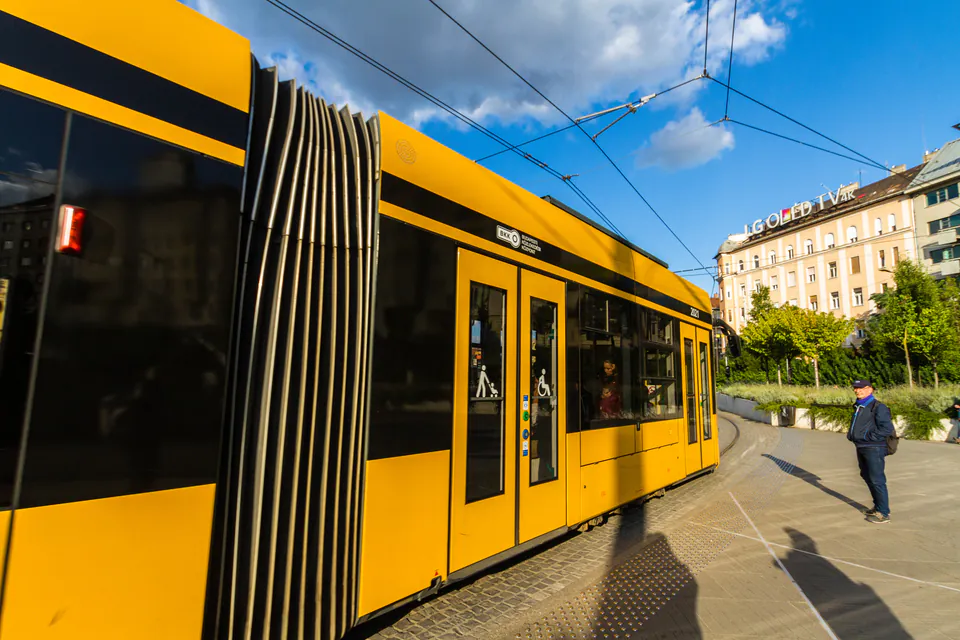
Getting Around with Mobility Needs
Budapest is working hard to modernize its tram fleet to improve accessibility. About 40% of trams now have low-floor designs that work for wheelchairs, strollers, and passengers with reduced mobility.
Accessible Lines and Vehicles
Tram 6, running 24/7, uses fully accessible Siemens Combino trams throughout its route along the Grand Boulevard. Tram 4 also uses these modern, barrier-free vehicles. Line 1 has a mix of Combinos and contemporary CAF Urbos 3 trams, both with level boarding and dedicated wheelchair spaces.
Other lines using low-floor CAF Urbos 3 trams include 3, 14, 17, 19, 42, 50, 56, 56A, and 69. But some popular scenic routes like Tram 2 still mostly use older, high-floor vehicles that present accessibility challenges.
Finding Accessible Services
The BudapestGO app includes filters for "barrier-free services" during trip planning, helping identify accessible departures. Timetables on the BKK website often underline or mark low-floor departures. Look for international wheelchair symbols on vehicle sides and at stops to confirm accessibility.
Accessible Infrastructure
Major stops along key routes like lines 1, 3, 4, and 6 generally have barrier-free access, with notable exceptions like Boráros tér for Tram 6. The connected Buda network, including stops along Bem rakpart, Bartók Béla út, and Fehérvári út, largely has step-free access.
When getting on with wheelchairs or large strollers, use doors marked with wheelchair pictograms, typically middle doors on accessible trams. Dedicated spaces inside fit wheelchairs and strollers, with securing points for safety during travel.
Staying Safe and Secure
Budapest's tram network is generally very safe, but staying alert makes sure you have trouble-free travels throughout your visit.
Protecting Your Stuff
Pickpockets sometimes target crowded trams, particularly busy lines 4 and 6 during peak hours and in tourist areas. We always keep valuables secure in front-facing bags or inside pockets. Stay aware of your surroundings, especially when distracted by scenic views or checking maps.
Getting Around at Night
Tram 6's 24-hour service gives reliable nighttime transportation along the Grand Boulevard. When using night buses or waiting for less frequent evening services, stick to well-lit stops and main streets. The night bus network covers areas where trams don't run overnight, keeping comprehensive city coverage.
